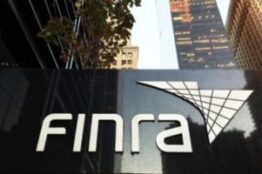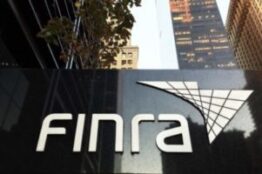
Raymond James Financial Services Inc. has agreed to pay a $400,000 fine to settle allegations that it failed to supervise a customer who used accounts he had with the firm to operate a multi-million-dollar Ponzi scheme.The firm submitted a Letter of Acceptance Waiver and Consent (AWC) to resolve a disciplinary action brought by the Financial Industry Regulatory Authority (FINRA). Raymond James accepted and consented to an entry of findings without admitting or denying the findings, and FINRA accepted the AWC on March 29.
FINRA found that Raymond James failed to implement procedures reasonably designed to detect or report suspicious transactions in the accounts of a customer, identified as Jerry Rose in a court document in a civil suit against the firm.
Rose used his Raymond James brokerage accounts to conduct a Ponzi scheme that cost his victims a total of $17.8 million.
After charges were brought against Rose by securities and insurance regulators in Ohio, he pleaded guilty in July 2007 to the sale of unregistered securities, among other things. That same month, the Ohio Division of Securities moved to place Rose’s assets into receivership, including his Raymond James accounts.
A short time after Rose pleaded guilty, Raymond James fired Timothy Dixon, the broker that handled his accounts, the court document said. In December 2007, Dixon was fined and suspended by FINRA.
In April 2008, Rose was sentenced to 20 years in prison and ordered to pay $17.8 million in restitution to approximately 200 victims who had provided him with funds.
Between January 2005 and July 2007, there were numerous red flags indicating that Rose was engaged in illegal activity. Although Raymond James was aware of these red flags, the firm failed to adequately review Rose’s activity despite anti-money laundering (AML) laws that obliged the firm to do so.
On several occasions, information that could have exposed the illegal activity was not provided to the firm’s AML officer for evaluation, the AWC said. After Raymond James became aware of a suspicious flow of funds in and out of Rose’s accounts, the firm still failed to conduct sufficient due diligence and failed to adequately monitor Rose’s accounts.
With these failures of supervision, Raymond James violated Rule 3011(a) and Rule 2110 of the National Association of Securities Dealers, a FINRA predecessor.
Rule 3011(a) requires member firms to establish and implement policies and procedures that can be reasonably expected to detect and cause the reporting of suspicious transactions as required by federal law. Rule 2110 concerns equitable principles of trade.
Raymond James Financial Services is a FINRA-registered broker dealer that employs more than 4,500 brokers at about 2,300 branch offices. The firm is one of three broker-dealer subsidiaries of Raymond James Financial Inc. and uses an independent contractor business model. FINRA public disclosure records contain a full list of regulatory actions involving Raymond James.
In addition to the $400,000 fine, the firm consented to be censured, as well to conduct a comprehensive review of the adequacy of its AML policies, systems, procedures and training, the AWC said. Raymond James had 90 days to complete the review and certify in writing that its procedures are reasonably designed to comply with FINRA rules and federal law.
The AWC states that Rose conducted a Ponzi scheme using his Raymond James accounts. Rose would periodically transfer funds to his brokerage accounts and then write checks every month to his supposed investors from a money market account that was also linked to Raymond James. Many of these checks were for identical amounts.
The firm’s AML procedures required the AML officer to be notified of any suspicious activity. This officer had full responsibility to enforce the policies and procedures needed to comply with federal AML rules and regulations, the AWC said.
Because Raymond James’ branches were staffed with independent contractors, the firm relied heavily on the AML officer’s review of so-called exception reports to detect suspicious activity at the branches. Despite this, Raymond James did not maintain a database that allowed the reports to be combined or compared.
In addition, the AML officer was responsible for overseeing more than 2,000 independent contractor offices. The officer had to manually review 15 weekly and monthly exception reports and investigate any suspicious activity.
During the period relevant to Rose’s Ponzi scheme, more than 2,100 client accounts – more than three per day — were identified as in need of investigation. In light of this, Raymond James did not devote adequate resources to its AML program, the AWC said.
Aside from shortchanging its own program, Raymond James specifically failed to adequately investigate suspicious activity in Rose’s accounts, the AWC said.
In addition to a heavy volume of options transactions, Rose moved large sums of money in and out of his accounts to accomplish his Ponzi scheme.
For instance, in a little less than a year, Rose deposited about $3.8 million in cash equivalents – official checks or cashier’s checks — into one of his accounts and then wrote more than 1,300 checks, most in suspiciously uniform amounts. Many of these checks went to those who were unwittingly part of his Ponzi scheme, the AWC said.
Rose’s accounts often triggered exception reports, and the high number of checks drawn on the accounts repeatedly made the excessive activity report.
In addition, the AWC said that Rose’s account appeared on Raymond James’s third-party disbursements report after Rose wired funds to pay off fraud victims who had sued him.
By the beginning of 2005, the AML officer had identified the Rose accounts as a potential money laundering operation. The officer emailed the broker and asked him to explain the unusual account activity.
The AML officer said the Patriot Act requires suspicious activity to be monitored and he asked for an explanation. The broker responded by saying that he had known Rose for 25 years as successful businessman with a large portfolio of stock and options as well as real estate, cars and an insurance firm, according to the AWC.
The deposits were the proceeds from sales of Rose’s many assets, the broker said, and Rose preferred bank checks to conduct transactions for record keeping purposes. The broker vouched for Rose’s legitimacy, the AWC said.
For the next two and a half years, the AML officer continued to ask questions. In August 2006, the officer alerted Raymond James that since October 2005, about $3.8 million dollars in cash equivalents were deposited into the brokerage account and $3.9 million worth of checks were written on the money market account.
Funds flowing in and out of an account can be a sign of money laundering, the AML officer said. Once again, the officer asked for a written explanation. The broker gave essentially the same explanation he had previously, the AWC said.
At no time did anyone at Raymond James follow up directly on concerns about Rose’s account activity. No one contacted the branch manager or found out if Rose had been questioned about the activity. No one ever conducted a sufficient review of the numerous checks either, even though they were presented to the AML officer for review, the AWC said.
Overall, Raymond James failed to properly implement its AML program so it could adequately respond to the red flags surrounding the Rose accounts, and the firm’s AML officers also failed to sufficiently review the information they were given.
Red flags either missed or not acted upon by the firm included a civil complaint served on Raymond James by a relative of Rose accusing him of conversion of funds, the AWC said. No one at Raymond James told the AML officer.
At one point the AML officer was given a copy of a subpoena issued to Raymond James by the Ohio Division of Securities seeking information about Rose’s accounts, but the AML personnel took no action.
The reddest of flags was waving in June of 2007, when the broker who handled Rose’s accounts received a Grand Jury subpoena to testify and provide documents about Rose, the AWC said.
While a copy of the subpoena was provided to Raymond James that month, no one informed the AML officer, even though the firm’s procedures supposedly required its AML officer to conduct a risk assessment of any customer who was the subject of a subpoena.
Finally, Rose actually told some people at the local branch of Raymond James that he had committed fraud and was going to jail. No one at the branch relayed this information to the AML officer, the AWC said.
Raymond James did not sufficiently identify or respond to the many red flags surrounding Rose’s accounts, the AWC said. The firm also failed to consider whether it should file a suspicious activity report for the accounts, as required by the federal Bank Secrecy Act.
Guiliano Law Group
Our practice is limited to the representation of investors. We accept representation on a contingent fee basis, meaning there is no cost to you unless we make a recovery for you. There is never any charge for a consultation or an evaluation of your claim. For more information, contact us at (877) SEC-ATTY.
To learn more about FINRA Securities Arbitration, and the legal process, please visit us at securitiesarbitrations.com








